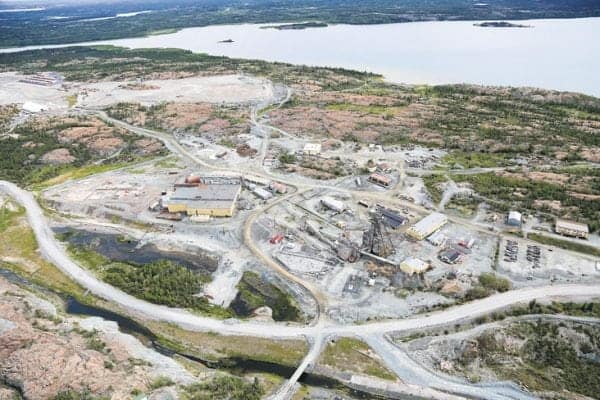Mining in the North has been good for Canada. A rough estimate of the total value of metal and mineral production for the three territories since 1977 is over $18 billion, according to Indian Affairs and Northern Development.
When Giant Mine first entered production in 1948, it fuelled a half-century of prosperity. Nobody in Ottawa cared much if the mine was polluting the land so long as the resource royalty cheques kept rolling in.
But now the ptarmigan are coming home to roost for the federal government.
Past federal negligence is a major why it’s so hard to get the green light for mining projects today and now the mining industry is struggling to advance new projects in the North.
Its lack of foresight in not ensuring there were adequate regulatory controls has left hundreds of thousands of tonnes of highly toxic arsenic trioxide and other chemicals at the abandoned mine site.

An upside to the toxic messes left behind at sites such as Giant Mine and other former mines, such as Colomac, is that the huge remediation project ought to be a boon to Northerners.
Long-term management will be needed because a complete cleanup will not be possible and if Northerners will be left to deal with the mess, then they should also enjoy the benefits from cleaning it up.
The U.S.-owned multinational corporation Parsons Inc. will be the construction manager of the Giant Mine cleanup project.
The government has stated that the project will provide valuable economic and employment opportunities for Indigenous peoples and Northerners but based on the Giant Mine Oversight Board’s 2017 annual report, this has not been happening.
Only 23 per cent of the remediation workers are Northern and only four per cent are Indigenous, states the report.
The oversight board called the current level of Northern and Indigenous involvement inadequate, as do we.
The federal government has not set quotas for Northern or Indigenous workers for the remediation project. Without quotas any promise to hire locally is mere lip service.
The oversight board also recommended the Yellowknives Dene First Nation receive an apology and compensation from the federal government for the mess left behind at the former gold mine. They are still without an apology, and they should have it.
Northerners should be first in line for remediation work because they will be the ones dealing with the mistakes of the past for a long time to come.
To mine the gold, ore had to be roasted at very high temperatures, which released a highly toxic by-product called arsenic trioxide.
It is a highly lethal substance – a tiny taste would be more than enough to kill – and Giant Mine produced 237,000 tonnes of it, most of which is still at the site. For the first few years arsenic trioxide went straight up the mine’s smokestacks, coating the surrounding area in toxic dust. Then arsenic-collecting “scrubbers” were installed to capture some of the poison.
Once captured, the arsenic was stored in underground chambers. In the 1950s, scientists and the government agreed that disposing of it in this fashion was a proper solution. They figured that the natural permafrost in the area would seal in the arsenic when the mine closed.
But they were wrong.
The Canadian government took over Giant in 1999 after Royal Oak Mines, the last private owner, declared bankruptcy. The company walked away and left Canadian taxpayers with a multimillion-dollar clean-up.
The remediation plan is to refreeze the arsenic by pumping coolant deep underground via a huge metal conduit. In addition, a number of thermosyphons, which are pumps that suck heat from the earth, will be constructed.
But there are no guarantees that this will be a permanent solution.
Officials have stated that they've planned for the risks that could happen in a 100-year period but arsenic is toxic forever.
Needless to say, Giant Mine’s toxic legacy is bound to last a lot longer than the golden years when the mine was putting people to work mining ore. It’s vital that Northerners are on the job cleaning it up as well.